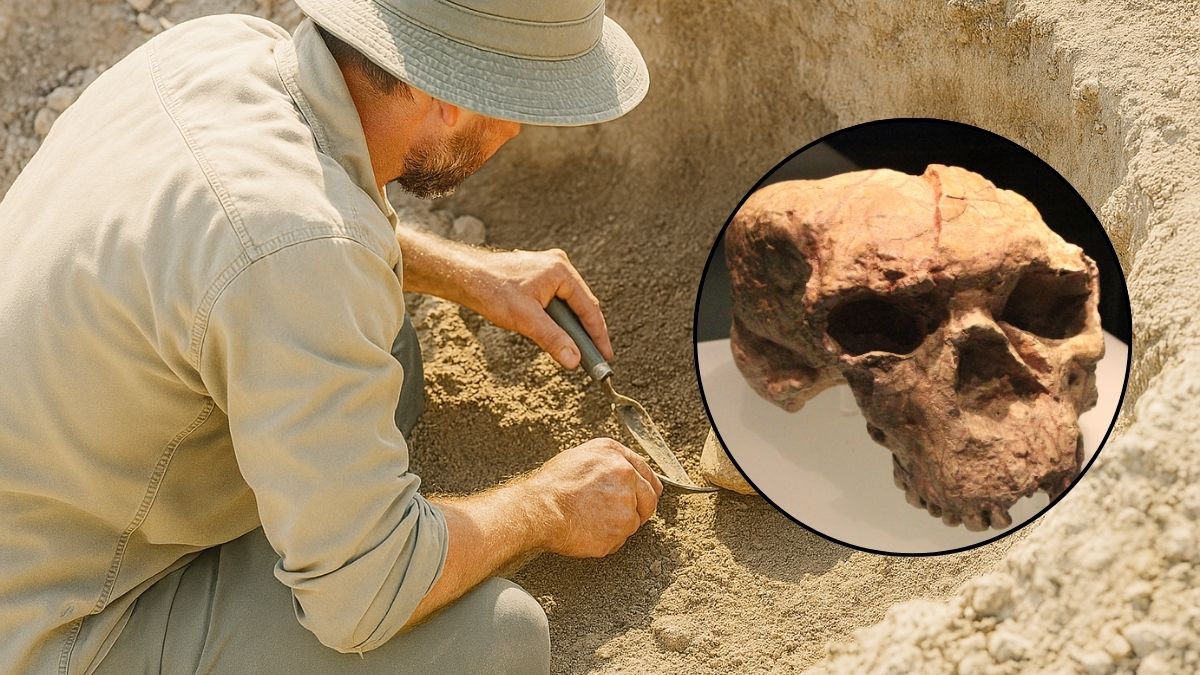Truth & Goodness
4,000 Space Mirrors Could Light Up Earth. Is It Day or Disaster?
04 December 2025

Have scientists just discovered a new human ancestor discovery? A reconstructed skull from almost a million years ago, found in China, could completely change our view of human evolution. The research results surprised even the experts.
No one expected that a discovery from 35 years ago would suddenly change our understanding of evolution. In 1990, archaeologists excavated a human skull in the Hubei province of China. For decades, its severe distortion made a precise study of the fossil impossible.
Only now, thanks to advanced scanning techniques and digital reconstruction, have researchers successfully restored its original shape. A team of researchers from several Chinese universities and Chris Stringer, an anthropologist from the Natural History Museum in London, performed the detailed analysis.
Yunxian 2—the name given to the find—is between 940,000 and 1.1 million years old. It represents the oldest known member of the evolutionary line that includes the mysterious Denisovans and Homo longi. This is a species related to Homo sapiens that, thousands of years later, settled vast areas of Asia and interbred with Homo sapiens.
New technology opened the door to the past. Quite literally. Researchers initially classified the skull as belonging to Homo erectus—a species with body proportions similar to ours but with a smaller brain.
The new analysis published in the journal Science overturned this hypothesis. “It has a long, low skull and a receding forehead behind a strong brow ridge. At the same time, the estimated brain size is the largest yet for any hominin from this period,” explains Chris Stringer in a statement to Reuters.
It looked like us, but it was not human. Who was it then?
Researchers placed Yunxian 2 in the Asian hominin line, which includes the species Homo longi and the Denisovans. The first lived in isolated groups throughout Asia for over a million years. The second, also called the Denisovan (after the Siberian cave where researchers found its remains), remains a mysterious individual. Scientists have not classified it into any known species yet.
The classification of Yunxian 2 into the Asian line completely changes the perspective on the timing of key moments in our species’ evolution. Researchers previously knew that at some point, our common ancestor split into five groups, which later evolved into:
Archaeologists suspected this division occurred about a million years ago, but they lacked hard evidence. The Yunxian 2 skull provides it and, furthermore, suggests that the divergence between the lines of human species occurred much earlier.
These remains feature characteristics so different from each other that for years, researchers struggled to classify them into specific lines. Instead of answering the question of what connects the later hominin branches to their common ancestor, the remains only created more questions. Yunxian 2, although categorized into the Homo longi and Denisovan group, provides valuable information.
It can help us discover when human evolution began. Scientists have tried to explain this for years. Now, they have the first real clue.
The skull found in China may also bring a solution to one of the greatest mysteries in contemporary archaeology. We refer to the “Muddle in the Middle” phenomenon—fragments of hominin bones dated to the Middle Pleistocene epoch (from 780,000 to 130,000 years ago).
Read this article in Polish: Nowy przodek człowieka. Rewolucyjne odkrycie w Chinach